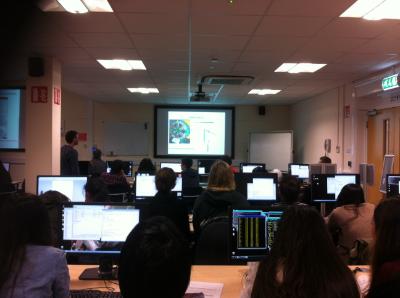Particle & Accelerator Physics Master Class: “Quasar help teach tomorrow’s scientists”
The Cockcroft Institute at STFC Daresbury Labs this week hosted its exciting annual event of mixed lectures and practical activities in the field of Particle and Accelerator physics. The Particle and Accelerator Physics Master Class (PPMC) 2014 lasting from the 25 - 27 March, was primarily to attract Y12/13 students from around the north and north-west region of England. This year’s PPMC involved a fun flavoured programme of mixed lectures and practical sessions ranging from Particle Physics, the LHC at CERN to Vacuum Science, Cryogenics and more importantly Accelerator machines and their physics/technology behind them.
The event started with students attending lectures, en masse and then were split into groups for the practical activities. They were also guided around the Daresbury laboratory to ALICE and EMMA accelerators and given a quiz to complete during the day.
In the group activities, students were challenged with real-life problems regarding current particle accelerators and were involved in hands-on exercises using Particle Physics simulators and Accelerator Physics computational tools. These activities were to reveal what real-scientists are working on in these fields and the obstacles we are faced with each day.
Blaine Lomberg, an OPAC Marie Curie Fellow in the QUASAR Group volunteered in the event by challenging students to use an Accelerator Physics computational tool called MAD (Methodical Accelerator Design), in order to simulate beam dynamics and optimize beam optics.
Blaine, guided the students to use MAD to investigate the complications involved in achieving high luminosity in particle colliders.
